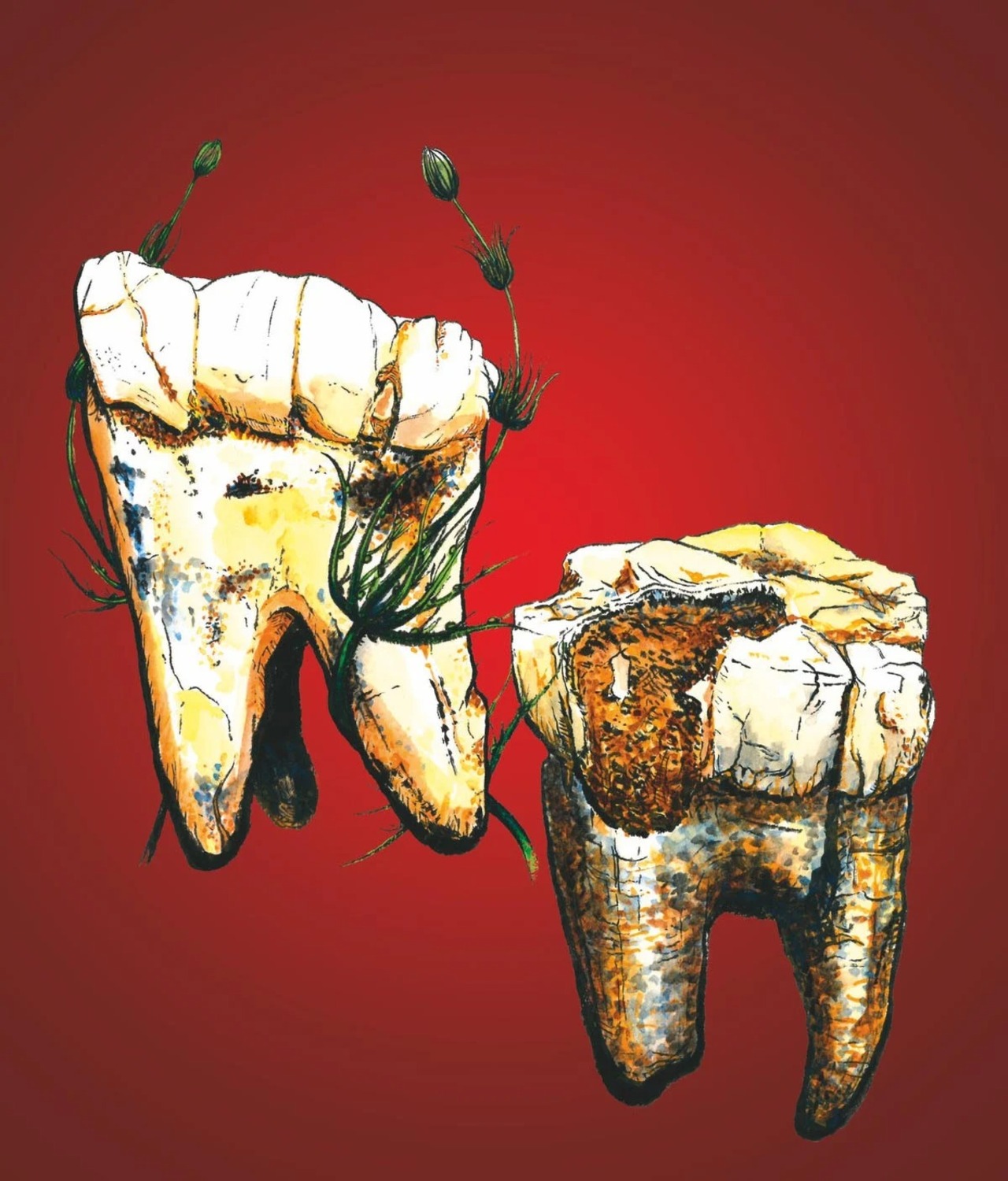
Behold the wall
In her new book, Eileen Truax explores how, contrary to popular perception that the question is still up for debate, the U.S. has already “built the wall,”…
Though it has yet to be constructed, the “wall” of Trump’s vision and that of many Americans who voted for him is already powerful enough to draw crowds, dominate headlines, and bring the government to a screeching halt for the longest federal shutdown in the nation’s history.
The physical presence of a wall, however, would ultimately be more symbolic than effective.
That is Los Angeles Eileen Truax’s thesis in her new book:
“We Built the Wall: How the U.S. Keeps Out Asylum Seekers from Mexico, Central America, and Beyond.”
The Mexican-American journalist has covered politics for decades in both Mexico and the U.S.
Like her first book, “Dreamers,” published in 2013, “We Built the Wall” takes a deep dive into the historical and political context of an issue that has all too often been reduced to sound bites and sensationalized stories in mainstream media narratives.
In a recent conversation at the AL DÍA newsroom, Truax explained that her purpose in writing the book was to shift the laser focus on the much-discussed “wall” President Trump has been pushing for, to the considerably more real and complex ways in which the bureaucracy of the U.S. immigration system is constructed to block asylum seekers from certain countries - many of them from Mexico and countries in Central America - from being granted entry when they flee extreme hardship and violence back home.
Eileen Truax came to Philadelphia invited by Temple University and AL DIA as part of the Klein College of Media and Communications Graduate Speaker Series that will bring to Philadelphia seasoned journalists and writers like Eileen to our city.
“For me, it’s important, at this particular moment, for people to acknowledge that this system is working in a way that is not helping people and is using our money to not help people,” said Truax, told AL DÍA’s Editor in Chief and CEO, Hernán Guaracao, who hosted her for a recent #ALDIATalks in AL DIA’s Newsroom.
”The truth is that the immigration system itself is funded by our own tax dollars, and is bolstered by decades of decisions from the top levels of the U.S. government that have clearly defined which are the “desirable” countries
Truax noted that although “sometimes we feel that immigration and immigrants and asylum-seekers are something that is far from us, that has nothing to do with us,”the truth is that the immigration system itself is funded by our own tax dollars, and is bolstered by decades of decisions from the top levels of the U.S. government that have clearly defined which are the “desirable” countries of origin for asylum seekers, while doing their best to shut the door in the faces of all others.
“The point in “We Built the Wall’ is to say that, of course, we have heard the recent narrative that pushes for building a physical wall in the border, to keep the country safe.
But the truth is that we have already a bureaucratic wall that prevents people to come to the country legally, in many ways, and allows the system to handpick whose people they want coming here, and what for,” Truax said.
Adding that she also wanted to focus on detailing the actual process of applying for asylum in the United States, from the moment someone crosses the border, to when it is decided in court where they are accepted or sent back home.
Through the stories of individuals, like Yamil, a man who preferred to spend 18 months in detention in Texas rather than be sent back to Mexico where his life was in peril, Truax carries the reader along to the hard facts and overwhelming numbers that sketch out the true picture of the vast human collateral of the Trump administration’s policy and the infrastructure that was created long before he took office.
It’s that kind of close look at the inner works of the machinery of U.S. immigration that is necessary, Truax asserts, in order to unravel the complexity of what President Trump terms a national emergency, and what many others identify as a humanitarian crisis, to describe the many families and individuals from Central America who are applying for asylum at the country’s southern border.
The use of physical and legal barriers to control who may have the privilege of entering the “land of the free” to pursue an American dream did not begin with the Trump administration, however well-manifested that tradition has been in the “Muslim Ban” issued shortly after Trump was inaugurated in 2017.
As Truax puts it in the book’s introduction: “U.S. immigration policy in the Trump presidency and the years beyond could be outrageous and appalling, but discriminatory policy is nothing new.”
The undesirable “others” of American history have changed throughout the centuries and decades, Truax notes, spanning the laws limiting entry of Chinese, Japanese, and Filipino immigrants in the second half of the nineteenth century, to pushback against Jews and Italians at the beginning of the twentieth century, Mexicans in the twentieth century, and Central Americans and Muslims in the late twentieth and twenty-first centuries.
It all amounts to an already-established precedent consisting of “the normalization of using political criteria to establish rules for entering the country, and for granting refugee status or political asylum in particular,” Truax writes in the book.
The policy for accepting asylum-seekers is, in fact, international policy thanks to the post-World War II 1951 Convention, which the U.S. took eight years to sign Truax noted. The ways in which the law is applied is where the U.S., as well as other countries, create their own system of processing asylum requests.
Someone from Venezuela comes and asks for asylum, they have more than an 80 percent chance to get approved
“In the case of the United States, the criteria is really political, so if right now today as we are talking, someone from Venezuela comes and asks for asylum, they have more than an 80 percent chance to get approved. But, if someone with the same kind of threat comes from Honduras, they have less than a 30 percent chance to get approved,” Truax said, highlighting inconsistency that arises from the U.S.’s political sympathies.
As for the southern border of the country itself, it was Democratic President Bill Clinton who, in 1994, first set in motion a wider-scale effort to build a physical barrier on the border, to aid in efforts to combat drug trafficking from Mexico into the U.S.
President George W. Bush then authorized an additional construction of 700 miles of barrier in 2006 through the Secure Fence Act, which was announced as completed in 2016 according to the Government Accountability Office.
However, even for those immigrants and asylum seekers who manage to make it to American soil, and are able to make their case for asylum, the backlog in immigration courts is prohibitive of their cases being resolved any time soon.
As of January 2019, there were more than 800,000 cases pending adjudication in U.S. immigration courts, according to Syracuse University’s Transactional Records Access Clearinghouse (TRAC) - a number that is double what it was five years ago, and which represents a 61 percent increase in the number of cases backlogged since Sept. 2016, towards the end of the Obama Administration.
In part due to the Trump administration’s more aggressive arrest policies, and the elimination of a more structured deportation priority system, what the backlog essentially translates to is yet another bureaucratic wall for those who risk their lives to cross the border and seek safety in the U.S.
To have a more nuanced conversation about the wall that President Trump has championed from the early days of his campaign, and his administration’s policies of separating families and aggressive detainment and deportation tactics, there needs to be a change in how journalists themselves cover recent events at the border and in the immigration system, as well as how well the media is able to provide historical and political context for current events, Truax said.
“That’s the reason why I think we need diversity in newsrooms,” Truax said.
“The interesting thing happening during this administration is that since all media are following the president’s agenda, and the president decided to put migration in the agenda to distract from other issues, now, we have media paying attention to migration - but to migration...just as current events. Breaking news.”
RELATED CONTENT
Working with or talking to the reporters who have been doing the “low-intensity” work reporting on immigration and the border for years and years, for Truax, is the only way to get the full picture.
Then, when “something really big breaks,” that particular event can be covered “in a continuum.”
This kind of context “cannot happen if you are a reporter, a CBS reporter (for example) who is flying from Washington, or from New York, to cover the thing,”
This kind of context “cannot happen if you are a reporter, a CBS reporter, very young, not familiar with the area, who is flying from Washington, or from New York, to cover the thing,” said Truax.
“You could see this young reporter, very nice guy, saying, ‘And here, we have a shelter, and in this shelter, there are children. And they are not with the parents. They’re separating the families.’
And it’s like, yes, because we don’t want those children in prison with their parents.
That’s a fight that we had 14 years ago to close detention centers that used to have children inside with the parents.
After a fight from community members, then they switched the thing, closed that detention center, and created this shelter for having the children, yes, in there, but in classes, with sleeping beds, not behind the bars as the parents are.
This is something that is not the ideal thing, but when you say, ‘bring the children to their parents,’ what you are saying is take the children into the detention center.
That was not the point. The point was taking the parents outside the detention center, not put the children with their parents,” Truax explained, highlighting the sensationalism often used by reporters, which can at times miss the real human consequences of immigration policy.
For Truax, the solution is having local and national reporters engage in more extensive collaborations in order to tell the breaking news stories both at the border and throughout the country.
“Collaborative journalism is the future. And for this country, if we don’t do that, we will still cover in bubbles, for bubbles”: Truax
“Collaborative journalism is the future. And for this country, if we don’t do that, we will still cover in bubbles, for bubbles,” Truax said.
“Putting mainstream media journalists with their resources with independent, ethnic journalists, local journalists, could be a huge asset for everyone.”
“I hope one day they realize that,” she added.
“And by the way, we heard about that family’s separation every day, everywhere, every media was covering the thing. Where are those people now?”
Because we just skipped to another thing, that’s what happens, she said.
If there is one person who will ensure that that is not just “what happens,” it will be Eileen Truax, along with the rest of the journalists she is calling on to take a harder look at how, and what is covered concerning immigration in the United States.












LEAVE A COMMENT: